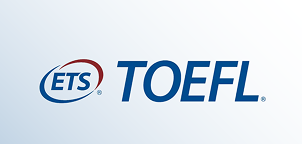Introduction to Inverters and Electric Drive
Enrol in Introduction to Inverters and Electric Drive — Master single and three-phase inverters electric drive units, and explore EV motor control. Elevate your expertise today!

Ratings
Level
Learning hours
Learners
Skills you’ll Learn
About this course
This course provides a solid foundation in the fundamental concepts of inverters and electric drive systems. The course curriculum begins with exploring basic inverter principles, progressing through key components such as single-phase half-bridge and full-bridge inverters. Participants will delve into the complexities of three-phase inverters before transitioning into electric drive units in two parts, followed by a dedicated section on electric vehicle (EV) motor and controller systems.
Whether you're a novice seeking an understanding of inverter technology or an enthusiast aiming to grasp the intricacies of electric drives, this course offers a structured and accessible pathway to enhance your knowledge in the dynamic field of electrical engineering. Join us on this educational journey to unlock the potential of inverters and electric drives.
Course Outline
In this module, you will learn the fundamental principles of inverters, including their role in converting DC power to AC power.
In this module, you will have a comprehensive understanding of Single Phase Half Bridge Inverters, their operation, control strategies, and practical applications.
In this module, you will learn the principles of Single Phase Full Bridge Inverters, their circuit topology, and how they convert DC power to AC power.
In this module, you will have an understanding on the fundamentals of Three Phase Inverters and their significance in power conversion.
In this module, you will learn about Electric Drive Units and their crucial role in modern electric vehicles (EVs). You will also
explore the different electric motors used in Electric Drive Units.
 UPGRADE
UPGRADE
Recommended university programs
What our learners enjoyed the most
Skill & tools
63% of learners found all the desired skills & tools
Frequently Asked Questions
Will I receive a certificate upon completing this free course?
Is this course free?
What prerequisites are required to enrol in this Free Introduction to Inverters and Electric Drive course?
You do not need any prior knowledge to enrol in this Introduction to Inverters and Electric Drive course.
How long does it take to complete this Free Introduction to Inverters and Electric Drive course?
It is a 1.0 hour long course, but it is self-paced. Once you enrol, you can take your own time to complete the course.
Will I have lifetime access to the free course?
Yes, once you enrol in the course, you will have lifetime access to any of the Great Learning Academy’s free courses. You can log in and learn whenever you want to.
Other IT & Software tutorials for you
Introduction to Inverters and Electric Drive
Inverters and electric drives are integral components in the field of power electronics, playing a key role in the control and utilization of electrical energy. These technologies are crucial for applications such as electric vehicles, industrial machines, and renewable energy systems. Let's delve into an introduction to inverters and electric drives to understand their significance in modern electrical systems.
Inverters:
An inverter is a device that converts direct current (DC) into alternating current (AC). It is a fundamental component in various applications where AC power is required but the power source, such as batteries or solar panels, produces DC power. Inverters are vital for enabling the integration of renewable energy sources into the electrical grid and for powering AC devices from DC sources.
1. Basic Operation:
Inverters use electronic components, typically semiconductor devices like transistors or thyristors, to rapidly switch the DC input on and off. This switching action generates an AC output waveform, which can be controlled to match the desired frequency, voltage, and waveform characteristics. Pulse Width Modulation (PWM) is a common technique used to achieve precise control over the output.
2. Types of Inverters:
- Voltage Source Inverters (VSI): These inverters maintain a constant DC voltage input and vary the output voltage by adjusting the pulse width of the switching signals.
- Current Source Inverters (CSI): In contrast, CSI maintains a constant DC current input, adjusting the output voltage by modulating the pulse width.
3. Applications:
- Renewable Energy: Inverters are used in solar power systems and wind turbines to convert the DC output from solar panels or wind generators into AC power suitable for the electrical grid.
- Uninterruptible Power Supplies (UPS): Inverters are crucial components in UPS systems, providing seamless transition from grid power to battery power during power outages.
- Electric Vehicles: Inverters are employed in electric vehicles to convert the DC power from batteries into AC power to drive electric motors.
Electric Drives:
Electric drives, also known as motor drives or variable frequency drives (VFD), involve the use of power electronic devices to control the speed, torque, and direction of electric motors. This technology is prevalent in industrial automation, transportation, and numerous other applications where precise control over motor performance is essential.
1. Components of Electric Drives:
- Inverter: The inverter is a key component that controls the frequency and voltage supplied to the electric motor.
- Controller: A control system manages the operation of the inverter, receiving input signals and feedback from sensors to adjust the motor's performance.
- Motor: The electric motor is the output device that converts electrical energy into mechanical motion. Different types of motors, such as induction motors and permanent magnet motors, are used in electric drives.
2. Advantages of Electric Drives:
- Energy Efficiency: Electric drives allow for precise control over motor speed and torque, optimizing energy consumption and improving overall system efficiency.
- Variable Speed Operation: Electric drives enable variable speed operation, providing flexibility in various applications, from industrial machinery to HVAC systems.
- Regenerative Braking: Some electric drives allow for regenerative braking, where the kinetic energy of the moving load is converted back into electrical energy, improving overall energy efficiency.
3. Applications:
- Industrial Automation: Electric drives are extensively used in manufacturing processes, conveyor systems, and robotics to control the speed and position of machinery.
- Electric Vehicles: In electric vehicles, electric drives regulate the speed and torque of traction motors, contributing to the efficiency and performance of the vehicle.
- HVAC Systems: Heating, ventilation, and air conditioning systems utilize electric drives to control the speed of fans and pumps, optimizing energy consumption.
In conclusion, inverters and electric drives are critical components in power electronics, playing pivotal roles in converting and controlling electrical energy. Inverters facilitate the integration of renewable energy sources into the grid, while electric drives provide precise control over motor performance in various applications. As technology advances, these components continue to evolve, contributing to increased energy efficiency, reduced environmental impact, and advancements in electric transportation and industrial automation.









































